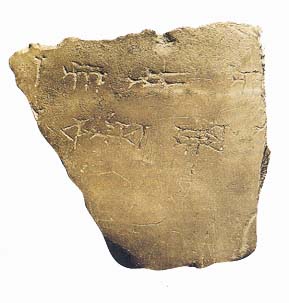Image Details

Kelsey Museum of Archaeology
Dating from the time of the Persian Empire is this stone vase fragment, which bears two partial lines of cuneiform writing, the upper in Elamite signs, the lower in Babylonian. The complete vessel included the same text written in Old Persian signs and, running vertically along the body of the vase, an Egyptian hieroglyphic version of the text. All four versions of the multilingual inscription read “Artaxerxes, King,” a reference to one of the three Persian rulers who governed under the name Artaxerxes during the fifth and fourth centuries B.C.E. The presence in Sepphoris of both the vase fragment and the rhyton may indicate that the Persians maintained a garrison along the crucial trans-Galilee highway that ran just north of the city.
